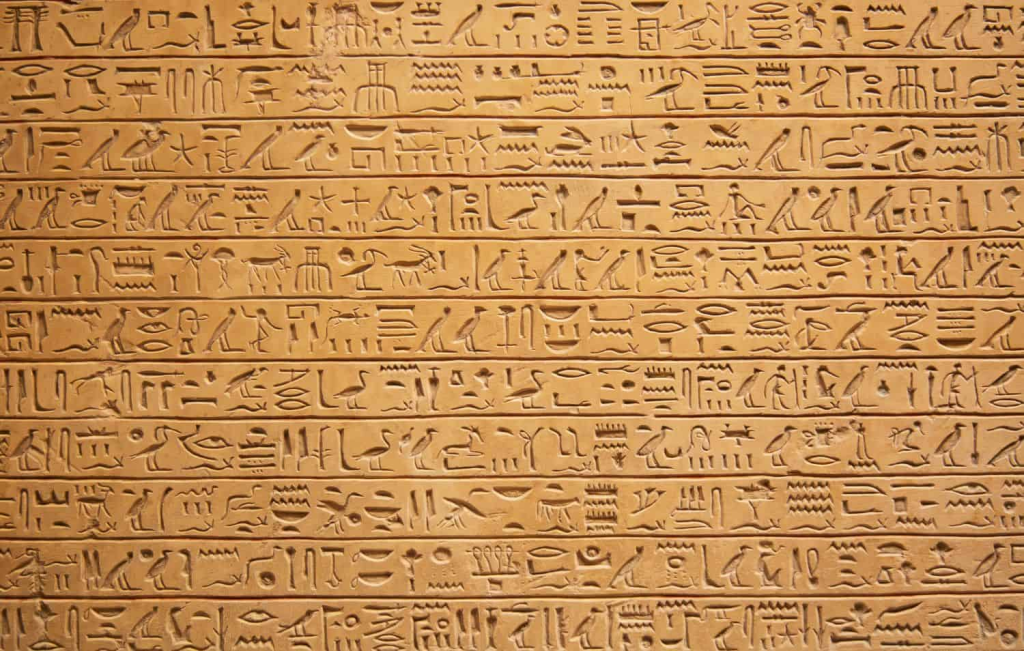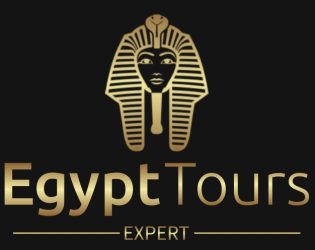
Ancient Egypt’s rich cultural legacy is woven with intricate symbols that hold profound meanings and insights into their society, religion, and beliefs. From hieroglyphs etched into temple walls to ornate amulets and artifacts, these symbols provide a fascinating glimpse into the world of the pharaohs. In this exploration, we uncover 60 famous ancient Egyptian symbols, their meanings, and the remarkable facts that make them an integral part of history.
1. Ankh
- Meaning: The ankh symbolizes life, eternity, and the key to the afterlife.
- Fact: It was often carried by gods, pharaohs, and depicted in religious art.
2. Eye of Horus
- Meaning: The Eye of Horus represents protection, health, and power.
- Fact: It’s associated with the falcon-headed god Horus and his solar and lunar symbolism.
3. Scarab Beetle
- Meaning: The scarab beetle symbolizes rebirth, transformation, and protection.
- Fact: It was used as amulets and carved onto objects to ensure safe passage in the afterlife.
4. Djed Pillar
- Meaning: The Djed pillar represents stability, strength, and endurance.
- Fact: It’s linked to the god Osiris and symbolized his backbone or backbone of the world.
5. Feather of Ma’at
- Meaning: The Feather of Ma’at symbolizes truth, justice, and cosmic balance.
- Fact: It’s used in the judgment scene to weigh the hearts of the deceased.
6. Scarabaeus Sacer (Sacred Scarab)
- Meaning: The Sacred Scarab represents transformation, protection, and regeneration.
- Fact: It was associated with the sun god Ra and the daily rising of the sun.
7. Was Scepter
- Meaning: The Was scepter symbolizes power, dominion, and authority.
- Fact: It’s often depicted being held by gods and pharaohs in royal regalia.
8. Shen Ring
- Meaning: The Shen ring symbolizes eternity, protection, and infinity.
- Fact: It encircles the name of a pharaoh, signifying their endless reign.
9. Lotus Flower
- Meaning: The Lotus flower signifies purity, rebirth, and enlightenment.
- Fact: It’s often associated with the sun and creation myths.
10. Eye of Ra
- Meaning: The Eye of Ra represents the sun, protection, and power.
- Fact: It’s linked to the sun god Ra and the destructive aspect of his gaze.
11. Crook and Flail
- Meaning: The Crook and Flail symbolize authority, kingship, and divine rule.
- Fact: They’re royal symbols carried by pharaohs, representing their responsibilities.
12. Sistrum
- Meaning: The Sistrum is associated with music, rhythm, and worship.
- Fact: It was used in religious ceremonies, especially those honoring goddesses like Hathor.
13. Tyet (Knot of Isis)
- Meaning: The Tyet symbolizes protection, magic, and feminine power.
- Fact: It’s often associated with the goddess Isis and maternal energy.
14. Shen Tattoo
- Meaning: The Shen tattoo symbolizes protection, eternity, and divine favor.
- Fact: It was believed to grant protection in life and the afterlife.
15. Horned Viper
- Meaning: The Horned Viper symbolizes protection, royalty, and danger.
- Fact: It’s associated with goddesses like Wadjet and Hathor.
16. Atef Crown
- Meaning: The Atef crown represents divinity, kingship, and authority.
- Fact: It’s a tall, feathered crown often worn by Osiris and later pharaohs.
17. Cartouche
- Meaning: The Cartouche contains the name of a person, symbolizing their eternal identity.
- Fact: It was used to emphasize the importance of a pharaoh’s name.
18. Tiet (Knot of Isis)
- Meaning: The Tiet is associated with protection, stability, and healing.
- Fact: It’s similar to the Tyet but has a different symbolic context.
19. Uraeus
- Meaning: The Uraeus is a symbol of protection, divine authority, and sovereignty.
- Fact: It’s the cobra often seen on the pharaoh’s headdress.
20. Was Scepter and Ankh
- Meaning: The combination of the Was scepter and Ankh symbolizes dominion and life.
- Fact: It’s a powerful representation of kingship and the pharaoh’s role.
21. Nebu (Golden Collar)
- Meaning: The Nebu represents status, wealth, and divine favor.
- Fact: It was a prestigious jewelry piece often worn by pharaohs.
22. Menat Necklace
- Meaning: The Menat necklace is a symbol of protection, joy, and power.
- Fact: It was used in ritual dances and ceremonies.
23. Horned Sun Disk
- Meaning: The Horned Sun Disk symbolizes renewal, power, and divinity.
- Fact: It’s a fusion of the solar disk and the horns of a cow, often worn by goddesses.
24. Ma’at Feather and Ankh
- Meaning: The combination of the Ma’at feather and Ankh represents balance and life.
- Fact: It signifies the importance of living in harmony with truth and justice.
25. Shenu (Cartouche)
- Meaning: The Shenu symbolizes eternity, protection, and divine rulership.
- Fact: It emphasizes the pharaoh’s role as a living god.
26. Shen Symbol with Solar Disk
- Meaning: The Shen symbol with a solar disk represents protection and solar power.
- Fact: It fuses two powerful symbols, reinforcing their significance.
27. Lotus and Papyrus Plant
- Meaning: The Lotus and Papyrus plant symbolize the unification of Upper and Lower Egypt.
- Fact: They’re often seen in combination, depicting the united kingdom.
28. Ankh Cross with Scarab Beetle
- Meaning: The combination of the Ankh cross and Scarab beetle signifies life and protection.
- Fact: It represents the potential for transformation and rebirth.
29. Winged Sun Disk
- Meaning: The Winged Sun Disk symbolizes protection, divinity, and enlightenment.
- Fact: It’s often found in architectural designs and sacred spaces.
30. Eye of Ra with Solar Disk
- Meaning: The Eye of Ra with a solar disk represents the sun’s power and divine sight.
- Fact: It’s a combination of the Eye of Ra and the sun’s symbolism.
31. Uraeus and Solar Disk Crown
- Meaning: The Uraeus and Solar Disk Crown represent divine authority and solar power.
- Fact: It’s a majestic headdress worn by goddesses and pharaohs.
32. Ma’at Feather and Shen Ring
- Meaning: The combination of the Ma’at feather and Shen ring signifies balance and protection.
- Fact: It represents the cosmic order and the pharaoh’s role in upholding it.
33. Cow Goddess Hathor
- Meaning: The Cow Goddess Hathor symbolizes motherhood, music, and joy.
- Fact: She’s often depicted with cow ears or a full cow form.
34. Lotus Flower and Sun Disk
- Meaning: The Lotus flower and Sun Disk symbolize creation, rebirth, and solar power.
- Fact: It’s a harmonious fusion of natural and divine elements.
35. Cobra (Wadjet) and Vulture (Nekhbet)
- Meaning: The Cobra (Wadjet) and Vulture (Nekhbet) symbolize protection and unity.
- Fact: They’re often seen on the pharaoh’s crown, representing Upper and Lower Egypt.
36. Wadjat Eye
- Meaning: The Wadjat Eye symbolizes protection, healing, and the lunar cycle.
- Fact: It’s associated with the goddess Wadjet and her protective gaze.
37. Udjat Eye (Eye of Horus)
- Meaning: The Udjat Eye represents protection, healing, and divine power.
- Fact: It’s often used as an amulet to guard against evil.
38. Knot of the Four Winds
- Meaning: The Knot of the Four Winds symbolizes protection and power over nature.
- Fact: It’s believed to grant the wearer control over the elements.
39. Water Lily (Blue Lotus)
- Meaning: The Water Lily represents rebirth, enlightenment, and spiritual growth.
- Fact: It’s associated with resurrection and transformation.
40. Ma’at Feather and Djed Pillar
- Meaning: The combination of the Ma’at feather and Djed pillar signifies balance and stability.
- Fact: It emphasizes the importance of maintaining cosmic harmony.
41. Ammit (Devourer of Souls)
- Meaning: Ammit represents destruction, judgment, and the consequences of wrongdoing.
- Fact: She’s depicted with a crocodile head, lioness body, and hippopotamus legs.
42. Shen Ring with Ankh
- Meaning: The combination of the Shen ring and Ankh represents protection and life.
- Fact: It’s a powerful symbol of divine favor and eternal existence.
43. Eye of Horus and Uraeus
- Meaning: The Eye of Horus and Uraeus symbolize protection and solar power.
- Fact: It fuses the protective aspects of both symbols.
44. Lioness Goddess Sekhmet
- Meaning: The Lioness Goddess Sekhmet represents power, healing, and protection.
- Fact: She’s associated with war and healing arts, often invoked for her strength.
45. Sekhem Scepter
- Meaning: The Sekhem scepter symbolizes power, control, and divine authority.
- Fact: It’s often carried by gods and goddesses to showcase their dominion.
46. Bennu Bird (Phoenix)
- Meaning: The Bennu Bird symbolizes rebirth, renewal, and immortality.
- Fact: It’s often associated with the sun god Ra and creation myths.
47. Djed Pillar and Solar Disk
- Meaning: The combination of the Djed pillar and Solar Disk represents stability and divine power.
- Fact: It’s a fusion of cosmic and earthly symbolism.
48. Shenu (Cartouche) with Ma’at Feather
- Meaning: The Shenu with Ma’at Feather symbolizes protection and cosmic balance.
- Fact: It emphasizes the importance of living in alignment with truth.
49. Lioness Goddess Tefnut
- Meaning: The Lioness Goddess Tefnut represents power, moisture, and creation.
- Fact: She’s associated with the primordial elements of water and fire.
50. Protective Cobra (Wadjet)
- Meaning: The Protective Cobra (Wadjet) symbolizes protection, royalty, and guardianship.
- Fact: It’s often depicted as a cobra emerging from a basket.
51. Papyrus Scepter
- Meaning: The Papyrus scepter symbolizes growth, abundance, and prosperity.
- Fact: It’s often carried by goddesses like Isis and Ma’at.
52. God Hapi
- Meaning: The god Hapi represents the Nile River, fertility, and abundance.
- Fact: He’s depicted with fullness of body, symbolizing the river’s annual flooding.
53. Amulet of the Heart
- Meaning: The Amulet of the Heart symbolizes protection and the heart’s significance.
- Fact: It was often placed on the mummy to ensure a favorable judgment.
54. Papyrus Flower
- Meaning: The Papyrus flower symbolizes growth, vitality, and regeneration.
- Fact: It’s often depicted in art and decorative motifs.
55. Dung Beetle (Khepri)
- Meaning: The Dung Beetle (Khepri) represents transformation, renewal, and the rising sun.
- Fact: It was linked to the sun god Ra and his daily journey across the sky.
56. Vulture Goddess Nekhbet
- Meaning: The Vulture Goddess Nekhbet symbolizes protection, motherhood, and guardianship.
- Fact: She’s associated with Upper Egypt and often depicted with protective wings.
57. God Min
- Meaning: The god Min represents fertility, virility, and abundance.
- Fact: He’s often depicted with an erect phallus and a flail.
58. Frog Goddess Heket
- Meaning: The Frog Goddess Heket symbolizes fertility, rebirth, and childbirth.
- Fact: She’s often invoked for protection during pregnancy and childbirth.
59. Crocodile God Sobek
- Meaning: The Crocodile God Sobek represents power, protection, and the Nile’s ferocity.
- Fact: He’s associated with the crocodile’s qualities and the river’s duality.
60. Sema-Tawy Symbol
- Meaning: The Sema-Tawy symbolizes unification, balance, and the harmonious joining of Upper and Lower Egypt.
- Fact: It’s often used as a motif in art and royal regalia.

